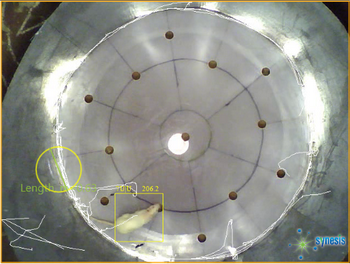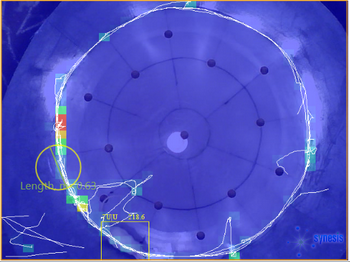Video analytics in studies of the effects of stress on the body
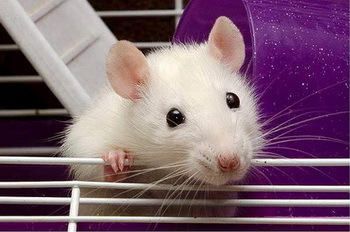 Today we would like to tell you about how our video analytics helps Chelyabinsk scientists. More precisely, to researchers of biochemical strategies for adapting a person in a stressful situation from the South Ural State Medical University (we just really like how proudly and imposingly the phrase “Chelyabinsk scientists” sounds).
Today we would like to tell you about how our video analytics helps Chelyabinsk scientists. More precisely, to researchers of biochemical strategies for adapting a person in a stressful situation from the South Ural State Medical University (we just really like how proudly and imposingly the phrase “Chelyabinsk scientists” sounds). Studies are conducted on the basis of the Department of Biological Chemistry by the leadership of the head of the department, Doctor of Biological Sciences, Professor Vadim Tseilikman. Both teachers and students participate in the project, the latter being allowed from any courses. The main way to use the Synesis software is video tracking in the Open Field test.
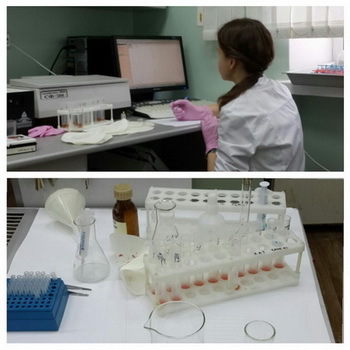 What is the essence of the experiment? Researchers are considering the effect of stress factors on metabolic changes and the homeostasis system of living organisms. Maybe it will hurt someone, but in humans and rats such changes occur in a similar way. But experiments on people do not have to set.
What is the essence of the experiment? Researchers are considering the effect of stress factors on metabolic changes and the homeostasis system of living organisms. Maybe it will hurt someone, but in humans and rats such changes occur in a similar way. But experiments on people do not have to set. The test consists in quantitatively measuring the components of the behavior of a white laboratory rat, which is placed in a completely new space (arena) for it, from which it still cannot independently get out. The arena is a well-lit, circular space, 1.2 m in diameter, fenced with high walls (45 cm), the floor is marked with radial and circular lines - divided into sectors.
It is known that the movement of animals in space is not chaotic, but structured. The structure of the route is determined by species-specific and linear features of behavior, it depends on the sex, age, individual experience of the animal, the nature of the space being studied, as well as the impact that the animal was exposed to immediately before testing.
Speaking of exposure. Where do animals get stress? Now in the course of the experiment, the main way to “intimidate” rats is to put them on sawdust that the cat urinated on. No wonder animals are nervous.
 The new environment - the arena - activates a complex set of reactions in the rat, including the desire to defend oneself, hide, and the desire to explore new territory. It is precisely the position in which the balance of the animal’s experiences is located that determines its behavior.
The new environment - the arena - activates a complex set of reactions in the rat, including the desire to defend oneself, hide, and the desire to explore new territory. It is precisely the position in which the balance of the animal’s experiences is located that determines its behavior. As a result of exposure to external irritating factors in rats, a certain level of anxiety is created, the manifestations of which are established during the experiments. As a rule, in rats with a high level of anxiety, there is a low motor (vertical and horizontal) activity, frequent episodes of fading, and also avoidance of the central part of the arena when moving in an open field. Animals with a low level of anxiety, on the contrary, are very active, quickly move around the entire arena, often stand on their hind legs and look into the mink.
In addition to the trajectory of movement, the number of central and peripheral sectors crossed by the rat is taken into account. All these indicators taken together give basic information about how much these or other influences affect the emotional state of the tested animals.
The entire course of the experiment is recorded on a video camera located above the arena. Then the video is processed using our CasRetail program (by the way, it is most often used in the retail sector, who are interested - the link ). As a result of processing, an image with the trajectory of the animal is obtained. Since the experiment began recently, and now researchers are in the process of calculating indicators, it’s too early to talk about the results (using the example of specific numbers).
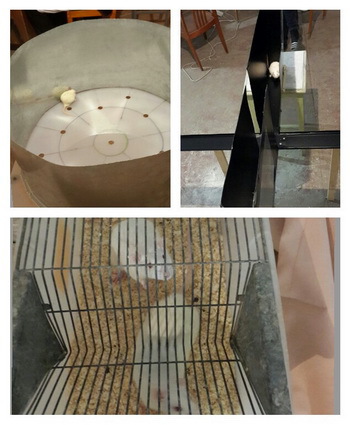
What gives our video tracking?
Firstly, actually, the visualization of the track is the automatic construction of the trajectory of the animal in the arena.
Secondly, the ability to assess mobility in different areas of the arena. The heat map shows the time the test mouse stops in different places in the arena.
Thirdly, the calculation of numerous indicators that characterize the movement of animals (speed, tortuosity of the path, stop, preference for turns in any direction, etc.).
And finally, increasing the objectivity of registering rat behavior.
This is how our solutions help young biochemist researchers. Cheer for them and look forward to scientific discoveries!
The experiment has just begun, so expect a post with the results!
UPD: here, in fact, an example: this is how the horror of an animal looks like in the form of a track and a heat map:
